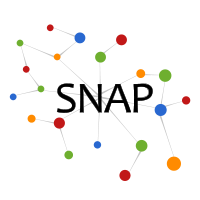Tutorial information
Web platforms enable unprecedented speed and ease in transmission of knowledge, and allow users to communicate and shape opinions. However, the safety, usability and reliability of these platforms are compromised by the prevalence of online antisocial behavior, for e.g. 40% of users have experienced online harassment. This is present in the form of antisocial users, such as trolls, sockpuppets and vandals, and misinformation, such as hoaxes, rumors and fraudulent reviews. This tutorial presents the state-of-the-art research spanning two aspects of antisocial behavior: characterization of their behavioral properties, and development of algorithms for identifying and predicting them.
The tutorial first discusses antisocial users --- trolls, sockpuppets and vandals. We present the causes, community effects, and linguistic, social and temporal characteristics of trolls. Then we discuss the types of sockpuppets, i.e. multiple accounts of the same user, and their behavioral characteristics in Wikipedia and online discussion forums. Vandals make destructive edits on Wikipedia and we discuss the properties of vandals and vandalism edits. In each case, detection and prediction algorithms of the antisocial user are also discussed.
The second part of the tutorial discusses about misinformation --- hoaxes, rumors and fraudulent reviews. We present the characteristics and impact of hoaxes on Wikipedia, followed by the spread and evolution of rumors on social media. Then, we discuss the algorithms to identify fake reviews and reviewers from their characteristics, and the camouflage and coordination among sophisticated fraudsters. Again, in each case, we present the detection algorithms, using textual, temporal, sentiment, network structure and rating patterns.
Finally, the tutorial concludes with future research avenues.
The tutorial will be held at 26th International World Wide Web Conference in Perth, Australia, on April 3, 2017.
Tutorial outline and slides
Tutorial materials
- Detailed description [PDF]
- Slides are linked above
Resources
Survey paper: False Information on Web and Social Media: A Survey., by S. Kumar, N. Shah.
Who should attend
This tutorial targets academic, industry and government researchers and practitioners with interests in social network anomaly detection, user behavior modeling, graph mining, cybersecurity, and community policy design. Beginners in the area will learn the basics of these algorithms. Experts in the area will learn in-depth algorithms and case-studies to detect online antisocial behavior that are both platform-specific techniques and platform-independent. This tutorial should appeal to researchers of several disciplines.
Biographies
Srijan Kumar is a Ph.D. candidate in the Computer Science department at the University of Maryland, College Park. His research broadly lies in data mining and social network analysis, and focuses on malicious user and information detection. He is a recipient of WorldQuant PhD Fellowship, University of Maryland Outstanding Graduate Student Dean’s Fellowship, and has been awarded Dr. Bidhan Chandra Roy Gold Medal by Indian Institute of Technology (IIT), Kharagpur.
Justin Cheng is a Ph.D. candidate in the Computer Science department at Stanford University. His research lies at the intersection of data science and human-computer interaction, and focuses on cascading behavior in social networks. This work has received several best paper nominations at CHI, CSCW, and ICWSM. He is also a recipient of a Microsoft Research PhD Fellowship and a Stanford Graduate Fellowship.
Jure Leskovec
is an associate professor of Computer Science at Stanford University and chief scientist at Pinterest. Computation over massive data is at the heart of his research and has applications in computer science, social sciences, economics, marketing, and healthcare. This research has won several awards including a Lagrange Prize, Microsoft Research Faculty Fellowship, the Alfred P. Sloan Fellowship, and numerous best paper awards. Leskovec received his bachelor’s degree in computer science from University of Ljubljana, Slovenia, and his PhD in in machine learning from the Carnegie Mellon University and postdoctoral training at Cornell University.



